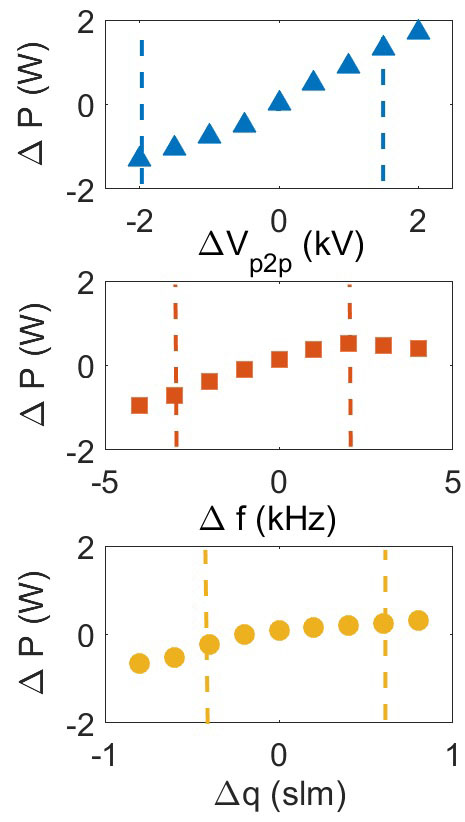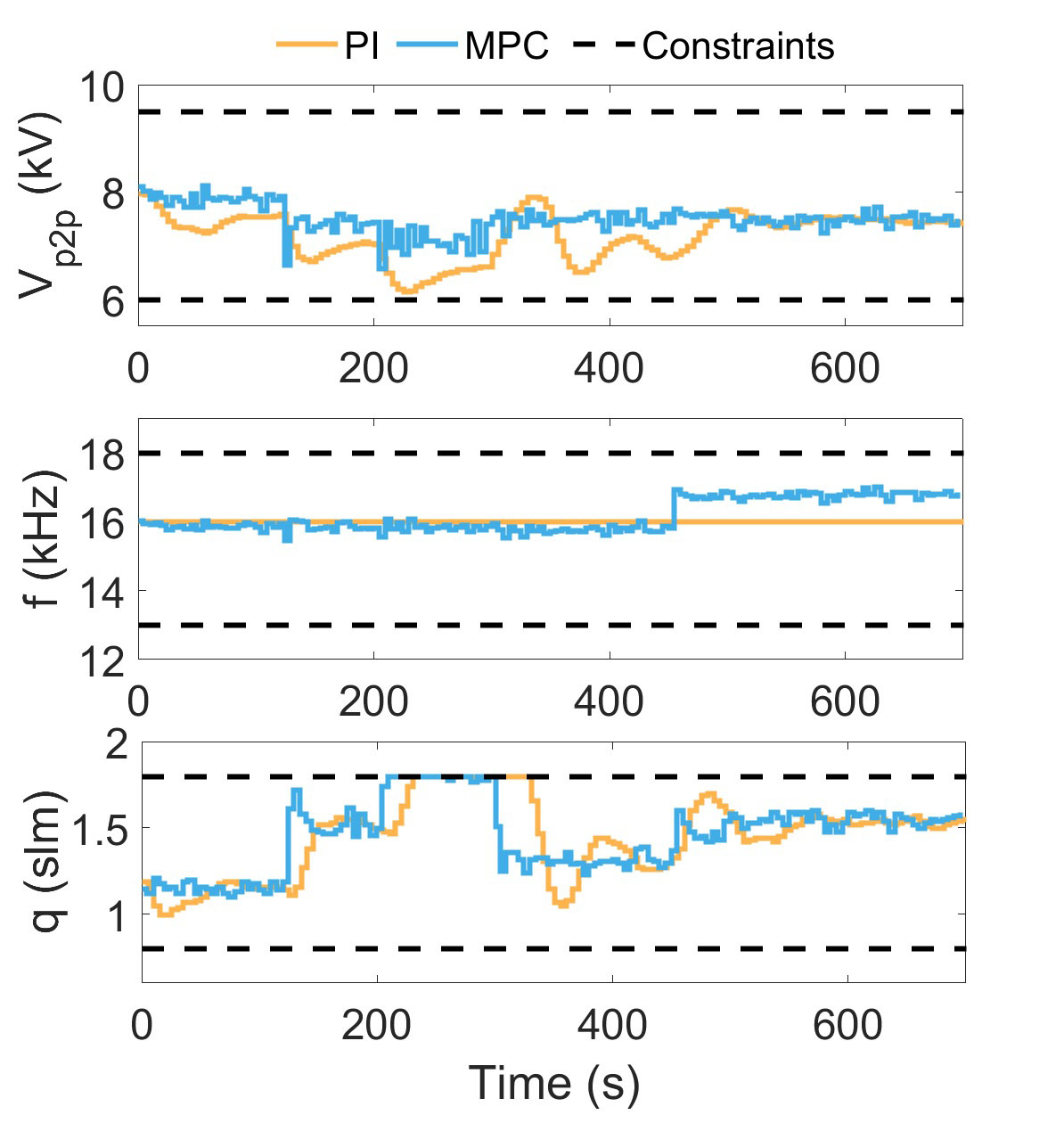Reports: DNI956627-DNI9: Plasma-Assisted Control of Catalytic Chemical Reaction
Ali Mesbah, University of California, Berkeley
Narrative Progress Report Year 1
Reproducible and effective operation of atmospheric pressure plasma systems (such as plasma-assisted catalytic reactors) is susceptible to the intrinsic variability of plasma characteristics as well as exogenous system disturbances. Electrical properties, the coupled transport and chemical phenomena, and chemistry of plasma can vary considerably under nearly identical operating conditions, posing a significant challenge to consistency and reproducibility of plasma treatments at atmospheric pressure. In light of the first objective of the project, we have built an experimental setup (in collaboration with Prof. Graves’ laboratory) for a kHz-excited atmospheric-pressure plasma jet (APPJ). The setup is used to systematically investigate the plasma effects on a substrate toward developing a physics-based model of the plasma dynamics A schematic of the experimental setup is shown in Figure 1. The plasma is generated via applying sinusoidal high-voltage electric field to a copper ring electrode placed 1 cm above the tip of a dielectric quartz tube (ID = 3 mm). The tube is directed at a grounded metal plate covered with a dielectric glass slip, placed 4 mm away from the tube tip. The manipulated inputs to the APPJ include the mass flow rate of He (q), applied peak-to-peak voltage (Vp2p), and frequency of excitation (f). The measured system outputs consist of maximum temperature (T) and total optical intensity of plasma (I) at the surface.
The APPJ is used to experimentally explore the plasma dynamics at atmospheric pressure and characterize the synergistic plasma effects on the target substrate. We have performed several experiments to characterize the step responses of the plasma in terms of the substrate temperature, plasma intensity at the substrate, and plasma power, as shown in Figure 2. The step responses indicate that the plasma exhibits a fairly linear behavior in the operating range of interest. Currently, we are leveraging the experimental results to quantify the thermal effects and nonthermal energy effects (i.e., fluence) of plasma on a dielectric substrate using empirical, nonlinear “dose metrics”, with the goal to characterize the time-integral accumulation of thermal and nonthermal plasma energies on the substrate.
In order to effectively regulate the plasma effects on the surface, we have also investigated model-based feedback control of the plasma system shown in Figure 1. To this end, a data-driven model has been developed and used to design an optimization-based control strategy (known as model predictive control, MPC). The MPC strategy not only allows us to systematically account for the multivariable nature of the plasma dynamics in terms of having multiple inputs and outputs, but also enables us to explicitly handle the constraints of the system in the control problem. We have investigated the closed-loop performance of the MPC strategy experimentally in light of its ability to maintain the substrate temperature and plasma intensity at the substrate at a desired level (i.e., setpoint tracking) in the presence of system disturbances and uncertainties; see Figure 3 for a sample result. Here our objective is twofold: 1) create a tightly controlled environment which is required for investigating the surface effects of plasma, and 2) use optimization-based control strategies to effectively regulate the accumulation of thermal and nonthermal plasma energies on the substrate, which are quantified in terms of nonlinear “dose metrics”. These goals comprise the focus of our current investigation. In the next phase, we aim to quantity and regulate the effects of plasma chemistry on the substrate.
Impact of the research: The PI had no background in the field of atmospheric pressure plasmas and their wide range of applications in materials processing, reaction engineering, and biomedical applications when he joined UC Berkeley in July 2014. This grant enabled the PI to initiate a new research direction with the focus on advanced control of plasmas toward safe, reproducible, and effective plasma treatments at atmospheric pressure. To the best of our knowledge, our research lab is the pioneering research group that works on the systems and control aspects of the atmospheric pressure plasma systems. The funding of this grant has been used to recruit a graduate student, who performs multidisciplinary research at the interface of plasma and systems and control. Our research findings in the first year of this project are expected to lead to one peer-reviewed journal publication. In addition, our preliminary findings have raised several questions that can lead to novel research directions in my lab.
Figure 1: Schematic of the kHz-excited APPJ in He constructed to investigate the plasma effects on a substrate. The blue and red dashed lines indicate the manipulated inputs and measured outputs respectively. |
Figure 2: Deviations in the substrate temperature, total optical density at the substrate, and the dissipated plasma power (with respect to the nominal operating condition of the APPJ) in relation to step changes in the applied peak-to-peak voltage, frequency, and flow rate. | ||
(a) | (b) |
Figure 3: The APPJ behavior under feedback control with PI control and MPC strategies in the presence of setpoint changes as well as a temporary step change of magnitude 3 mm in the device tip-to-surface separation distance: (a) outputs — maximum temperature T and total optical intensity of plasma I at the surface and (b) manipulated inputs — peak-to-peak voltage Vp2p, frequency of excitation f, and He mass flow rate q.
| |

















